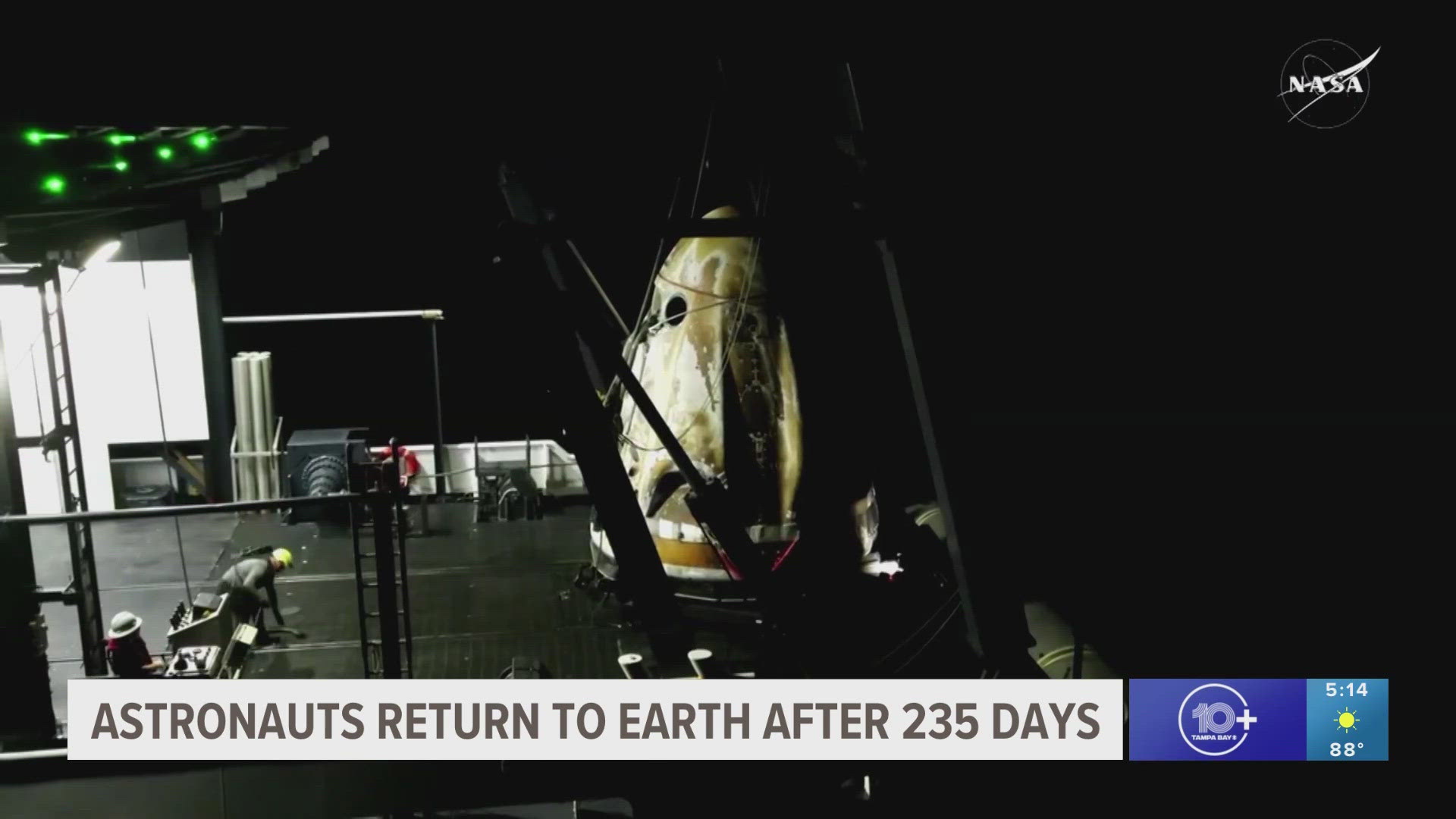TAMPA, Fla. — What ends up in the toilet from an astronaut could be the very first step toward growing fresh vegetables in space.
Researchers at NASA plan to use a machine built at the University of South Florida, which extracts nutrients from human waste, and test how effective it could work in a simulation of space, according to the school.
It's called the Organic Processor Assembly -- or OPA -- and, it could be the most sustainable way yet to grow healthy produce for astronauts. One day, USF says, it might be used to help build a sort of permanent presence on the moon.
Vegetables like lettuce and cabbage have been grown aboard the International Space Station since 2014, but the fertilizer is sent up from Earth. USF Civil and Environmental Engineering Professor Daniel Yeh's tech eliminates the need for transport.
"NASA can only resupply a limited mass and volume to the moon and Mars habitats. This limitation forces research advancements to provide a reliable, closed-loop system between food consumption and production," said NASA’s Principal Investigator Luke Roberson in a news release. "With the OPA technology, we’re investigating if we can sustainably begin recycling human wastewater resources into potable water and fertilizer nutrients.
"There is a big difference between a fresh and canned strawberry in both nutrient content and interaction with your senses."
The agency plans to start testing the machine at Kennedy Space Center and see if it would be compatible with existing and upcoming life support technologies, USF says.
If successful, NASA will decide whether OPA can be used in its Artemis moon mission.
"Over the years, our team has gotten pretty good at coming up with technologies that work well on Earth,” Yeh said in the release. "Developing resource recovery solutions for space was something new. It presented a whole new series of design challenges to overcome, such as those related to mass, volume, modularity and reduced gravity."
- Hillsborough County school leaders push back after state said district 'needs to follow the law'
- Invest 95-L could become next depression or tropical storm
- Family of Don Lewis, whose cold case drew new interest after 'Tiger King,' offers $100K reward
- Reports: Big Ten votes to cancel 2020 football season
- These phone numbers are contact tracers trying to get ahold of you
- Trump abruptly leaves press conference after shooting outside White House
FREE 10 TAMPA BAY APP:
►Stay In the Know! Sign up now for the Brightside Blend Newsletter





